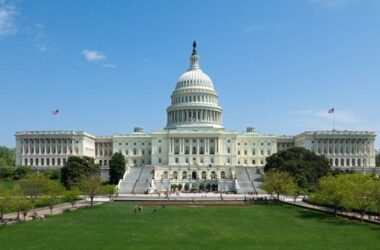Release from News Media Alliance:
CHARELSTON, W.Va. — Four national media organizations representing thousands of local newspapers and local broadcast media outlets including the West Virginia newspaper industry jointly called on Congress to provide critical support to local news media in its next stimulus bill designed to provide relief to businesses impacted by the coronavirus pandemic.

In its summary document, News Media Alliance, National Association of Broadcasters (NAB), National Newspaper Association (NNA) and America’s Newspapers specifically call for Congress to ensure the ability of local media to seek relief under the Paycheck Protection Program and to fund federal advertising spending on local media through directing current U.S. government advertising campaigns to local news and media outlets, and providing the Department of Health and Human Services, the Small Business Administration and other relevant agencies with an additional $5-10 billion for direct funding for local media advertising that would be evenly distributed to local media in communities of all sizes.
In support of this action, the West Virginia Press Association had arranged a conference call with U.S. Senator Joe Manchin, D-W.Va., to discuss the impact of the coronavirus on the newspaper industry and possible issues facing residents of the state.
News Media Alliance President & CEO David Chavern said, “Local news provides reliable, fact-based information that is absolutely critical to communities, particularly during events like the COVID-19 crisis. This is evident in the public’s incredible demand for information from local publishers. However, the rapidly contracting ad market in response to the pandemic is dealing a sharp and immediate blow to local news publishing. If this continues, there won’t be local journalism in many communities.”
Readers have rushed to local news outlets to obtain reliable news and information about their communities, but most of the value of the online engagement flows to the dominant tech platforms. The sharp decline in the general ad market since the COVID-19 pandemic began has caused the revenue of local publishers to contract dramatically. According to an industry survey, despite record audience, most publishers who saw an increase in subscriptions from February saw growth of under 10 percent. Additionally, advertising and other sources of revenue are projected to fall by at least 25 percent, with many expecting declines of over 50 percent. As a result, a wide range of local news publishers have been forced to consider layoffs, furloughs or pay cuts, just when the public needs them the most.
National Association of Broadcasters President and CEO Gordon Smith stated, “NAB is proud to join our friends at the News Media Alliance, National Newspaper Association and America’s Newspapers in support of local media. In communities across America, local broadcasters and local newspapers provide an indispensable source of credible journalism and community focused information that simply cannot be replaced by other media platforms. We urgently request that policymakers support our effort to preserve advertising-supported local media outlets that are so important to the fabric of daily life.”
National Newspaper Association President and publisher of the Douglas (Wy.) Budget Matt Adelman stated, “Local newspapers are valiantly serving their communities to the best of their abilities through the COVID-19 public health crisis. They are more critical than ever at a time like this. As the nation pulls together to get through this period, local media need the revenue from advertising and the public needs essential messages from the government.”
America’s Newspapers CEO Dean Ridings stated, “In the face of business challenges that are pervasive and all-encompassing, our member newspapers are carrying out their mission to provide their communities with vital news and information. The assistance we are asking for today is an investment in sustaining the information infrastructure that is an essential element for a successful American response to this public health crisis.”
The summary document can be found here.





